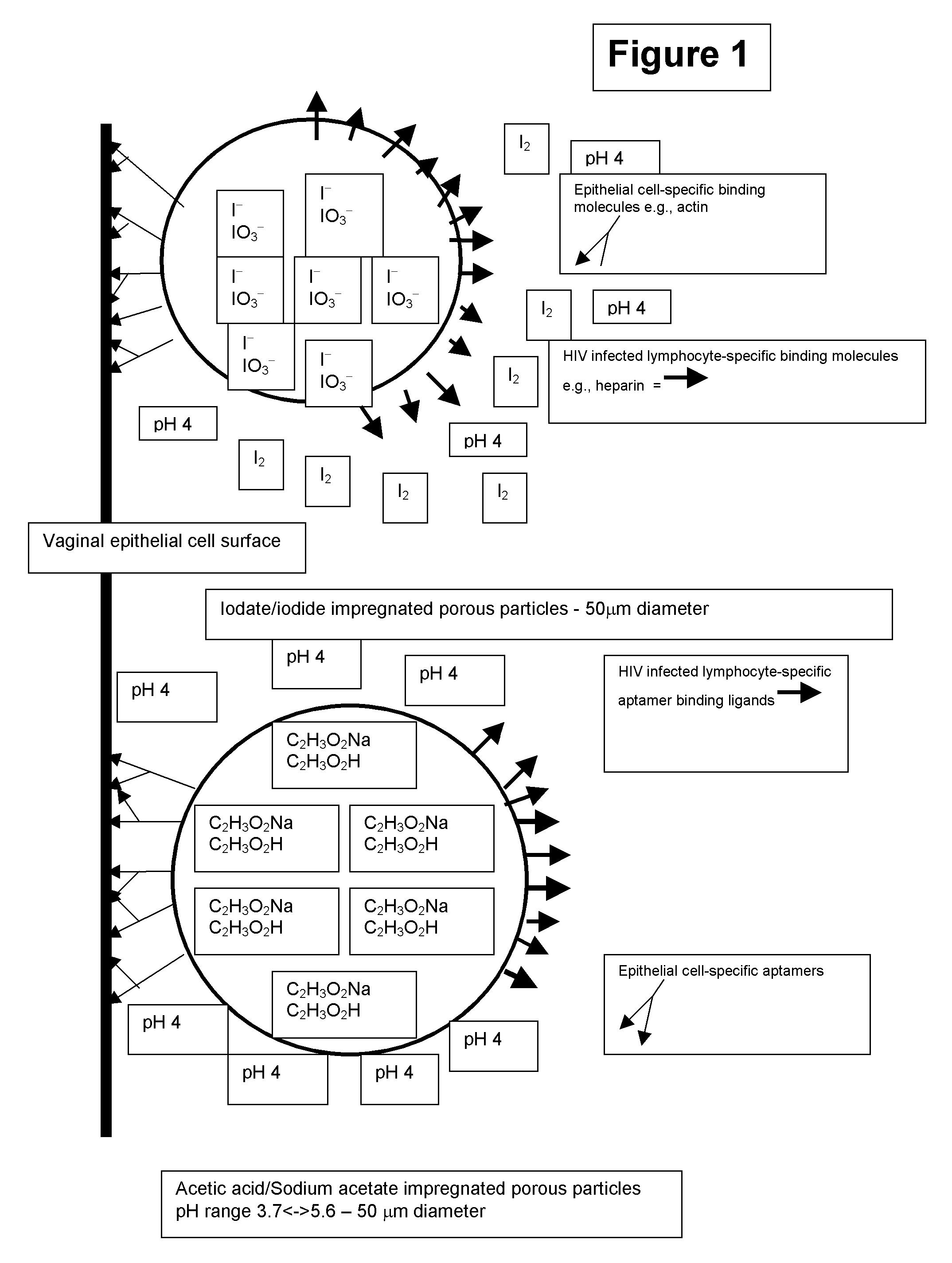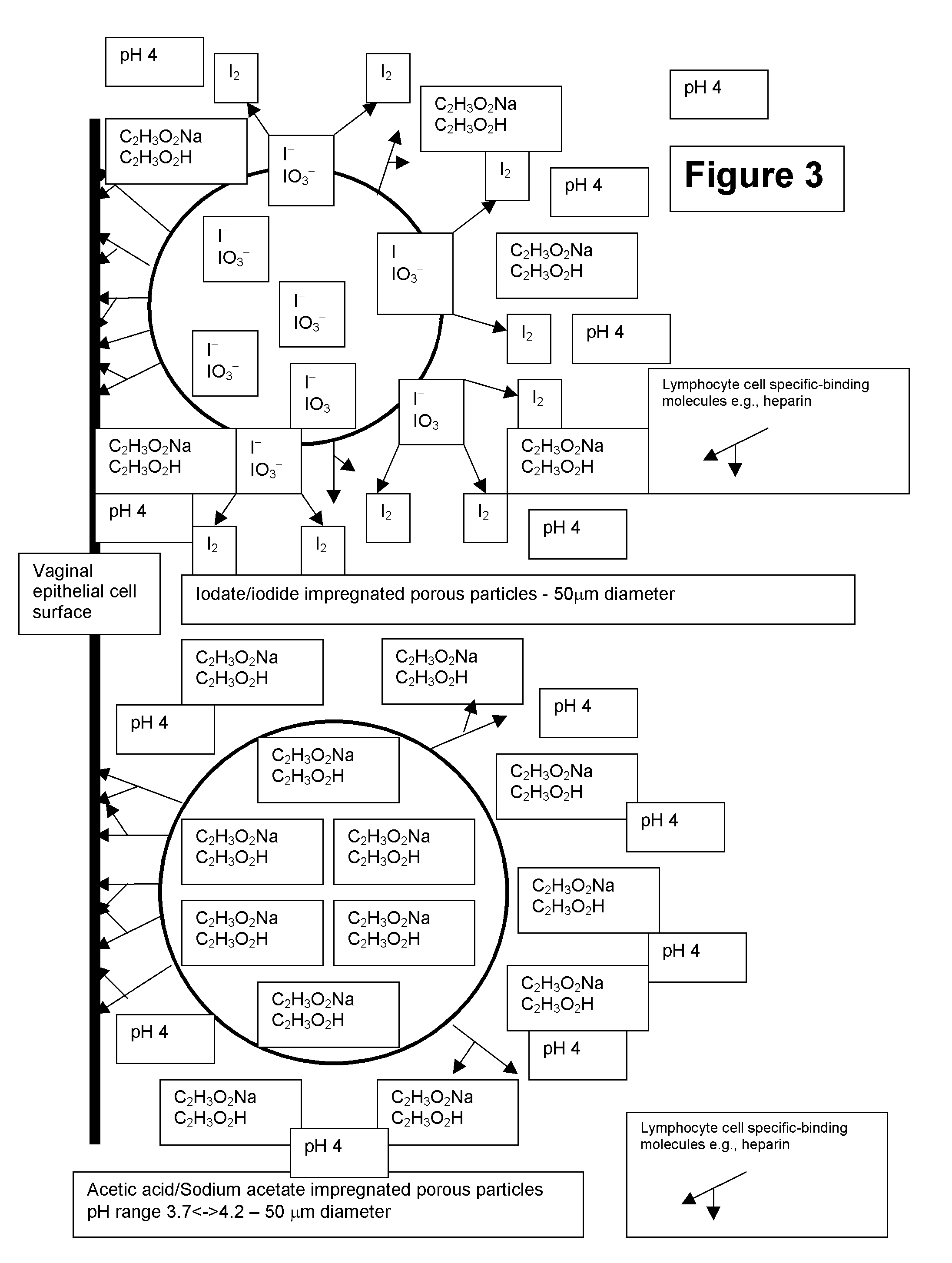Controlled Iodine Release Particle Micro-Biocide
a micro-biocide and iodine release technology, applied in the field of biocide, can solve the problems of compound association difficulties with their us
- Summary
- Abstract
- Description
- Claims
- Application Information
AI Technical Summary
Problems solved by technology
Method used
Image
Examples
Embodiment Construction
[0015]The present invention is distinctly different from Farokhzad et al., 2006, and a major improvement, in several important ways. First, all particles, which can be polymer or other material, are designed to be too large for cell endocytosis and in fact particles are specifically designed to remain outside targeted cells. Second, alternative epithelial cell binding substances are used such as actin, laminin, collagen and fibronectin and these are attached to the particles via covalent linkage or biotin-streptavidin. Particles are 50 to 100 μm are prepared containing a variety of chemicals. The 50 μm particles are preferred. Particles may be either biodegradable or non-biodegradeable but in all cases they carry chemicals both on their surface and throughout their structure. The described structures e.g., biodegradable poly(d,l-lactic-co-glycolic acid)-b / ock-poly(ethylene glycol) (PLGA-b-PEG) copolymer are a preferred embodiment but there are many structures that can support the ch...
PUM
| Property | Measurement | Unit |
|---|---|---|
| pH | aaaaa | aaaaa |
| diameters | aaaaa | aaaaa |
| pH | aaaaa | aaaaa |
Abstract
Description
Claims
Application Information
 Login to View More
Login to View More - R&D
- Intellectual Property
- Life Sciences
- Materials
- Tech Scout
- Unparalleled Data Quality
- Higher Quality Content
- 60% Fewer Hallucinations
Browse by: Latest US Patents, China's latest patents, Technical Efficacy Thesaurus, Application Domain, Technology Topic, Popular Technical Reports.
© 2025 PatSnap. All rights reserved.Legal|Privacy policy|Modern Slavery Act Transparency Statement|Sitemap|About US| Contact US: help@patsnap.com



